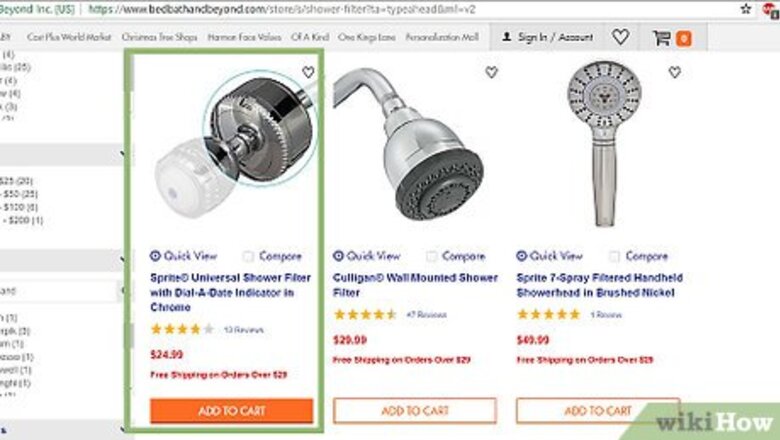
views
Choosing the Right Tools and Times
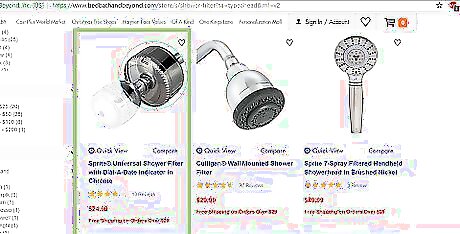
Add a shower filter. Adding a shower filter to your bathroom will benefit the health of your hair and skin by reducing exposure to chemicals such as chlorine. A shower filter will also enhance the pH balance of the water that you are using to wash and clean with and will ultimately result healthier, softer skin and hair. It may seem a bit over-the-top but the benefits can potentially outweigh the initial hassle of installing it. Shower filters can be purchased at home goods or home improvement stores, such as Bed Bath and Beyond or Home Depot. To install the filter, begin by detaching the shower head from the pipe it is attached to. Place the filter on the pipe and hand turn it in a clockwise direction to secure it. Turn on your shower and let water run through the filter to flush it out. The water may be discolored, which is normal for a new filter. Let the water run until you see that it is clear when coming out of the filter. Place the shower head on the filter and hand turn it clockwise until it is secure.
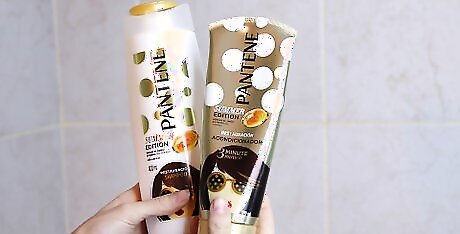
Select your shampoo and conditioner. Each hair type has different needs and requirements. A shampoo that works great for your friend’s hair may not work very well for yours. Talk to your hair stylist or do some research to find a shampoo and conditioner that will work best for your hair type. You can even take a quiz online to find out which products might work best for you, based on your hair and scalp type. Color-treated hair can benefit the most from shampoos that are sulfate-free and contain gentler alcohols than what is found in other shampoos. There are shampoos available based on the color that you have dyed your hair, such as blonde, red, or brown. You can also help the color of your dyed locks last longer by using a shampoo designed for color-treated hair. Curly hair is more prone to dryness, so look for a sulfate-free moisturizing shampoo. To reduce frizz and manage curls, try a nourishing shampoo like DevaCurl Low-Poo. Those with dry, brittle hair should try a moisturizing shampoo that cleanses but will also rehabilitate dry, damaged locks. A great shampoo to try would be the Living Proof Restore Shampoo, which contains a molecule that controls moisture.
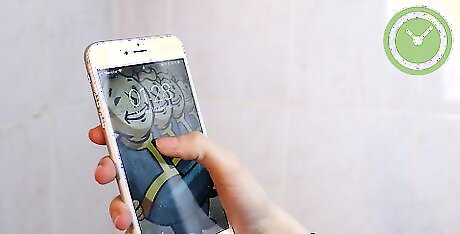
Wash your hair in the evening. It is best to wash your hair in the evening to allow it time to air dry. Hair is susceptible when wet, so brushing your hair directly after you wash it can damage it more easily. Letting it air dry will keep it healthy and will reduce your styling time in the morning!
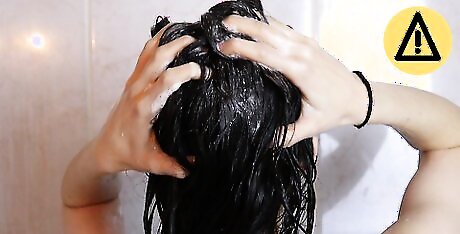
Shampoo hair at the correct frequency. Shampooing your hair too frequently can strip the hair of natural oils that are essential for your hair’s health and vitality. Individuals with fine hair may need to shampoo almost every day, otherwise it may look oily. But those with thicker or curly hair may be able to get by only shampooing a few times a week. On the day you are not washing your hair, you may use a dry shampoo. It will refresh your hair and absorb the excess of oil.
Shampooing and Conditioning Hair
Rinse your hair. As soon as you step in the shower, rinse your hair with warm water. You hair should be thoroughly wet before adding any shampoo or conditioner. Rinsing your hair first with warm water is also beneficial because it opens the cuticle of each strand of hair, which is the shingle-like outside layer of the strand of hair. This will allow the dirt, product, and oil to be more easily removed. It will also help your hair efficiently absorb the oil in your conditioner.
Condition your hair first. Conditioning your hair before adding shampoo will actually protect your hair and will prevent the ends from drying out too much. It will also fill in any holes in the cuticle with moisture, which will ultimately both protect your hair and increase the smoothness and shine. Add a dime sized amount of conditioner to your palm and quickly run it through your hair. Rinse lightly. The longer your hair, the more conditioner you’ll need to use. Experiment with the amount until you have enough to massage through your hair without any left over.
Shampoo your hair. Add a quarter-sized amount of shampoo and begin lathering, but only at your scalp. Younger hair, closest to the scalp, is often the most oily, while the hair farthest away from your scalp is older and dries out faster. This is why it’s only necessary to shampoo at the base of your scalp, rather than lathering up all of your hair. It is not necessary to shampoo the rest of the hair, unless it is dirty or oily. Rinse away the shampoo with warm water.
Add conditioner from the middle of your length to the tips. You do not want to make the tips of your hair absorb more oil than they naturally already do. To avoid this, apply conditioner starting only from the middle of the length of your hair to the tips. Let the conditioner sit in your hair while you finish showering. You can clip it up to keep it out of the way. When you’ve finished up with everything else, release the hair from the clip and rinse the conditioner thoroughly out of your hair with warm water.
Rinse with cold water. Finish washing your hair by giving it a final rinse with cold water. This can be tough but the benefits outweigh the pain. Cold water will seal the cuticle of the hair and make your hair shine, since the sealed cuticle reflects light.
Blow-Drying Long Hair
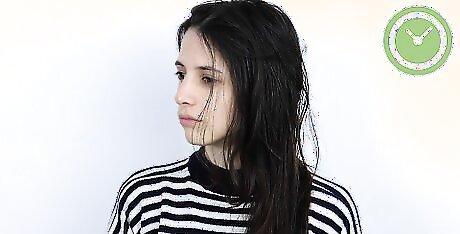
Allow to air dry for half an hour or so. Allowing the hair to air dry before you blow-dry it will save you effort and will reduce damage. The drier your hair, the less exposure it will have to the blow-dryer, which will save you time and your hair from unnecessary damage. Take this time to do something else, such as preparing for your day or completing a task that you have been meaning to do.
Apply a heat protectant serum. Squeeze a dime-sized amount of serum onto your palm and rub between your hands. Apply to your hair, taking care to avoid the roots, so as not to make them greasy by adding too much product. Once you have applied the serum, brush your hair out with a wide-tooth comb, carefully brushing out any knots or tangles you encounter. A little bit of serum goes a long way! Don’t squeeze out any larger than a dime-sized amount; you might even be able to get by with a bit less.
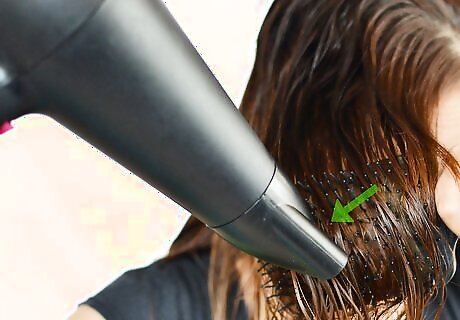
Attach the concentrator nozzle to your hair-dryer. The concentrator nozzle is often overlooked but it is an important tool to use with your blow-dryer. It focuses the flow of air onto one section of your hair, rather than blowing hair all over in a chaotic manner. Each hair dryer should come with this nozzle in the box. If you do not have one for yours, you can search online for a nozzle that matches the make and model of your blow-dryer.
Section your hair. Tie back the uppermost part of your hair near the crown of your head, then section the rest into three or four inch sections. You can use clips to pin the hair firmly into place. When you are ready to dry a section, remove the clip and brush out any tangles.
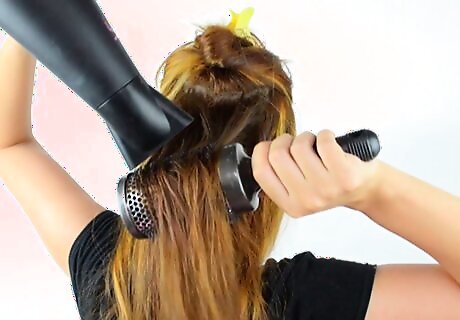
Use a round brush. Hold the round brush firmly in one hand (usually your dominant hand) and the blow-dryer in the other. Position the round brush at the end of the hair that is closest to the scalp, with the hair of the section you are getting ready to dry resting on top of the round brush. Press the concentrator nozzle against the brush and hair, with the round brush supporting the hair. Your hair will be between the blow-dryer and the round brush. Comb out the section of hair, keeping the nozzle pressed against the brush, until that section is dry. Repeat with each section until all of your hair is dry.




















Comments
0 comment